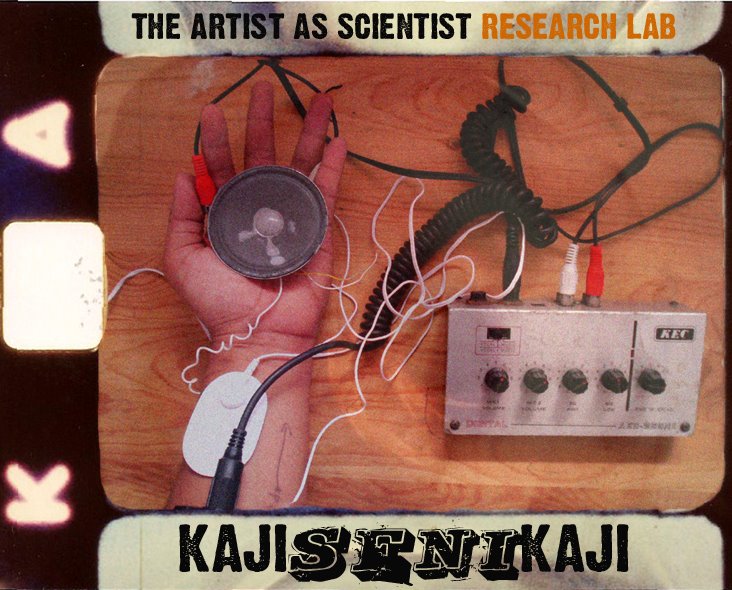
The art of sound
Andrea Polli uses sonification to translate Antarctic science into an acoustic experience
By Peter Rejcek, Antarctic Sun Editor
Posted February 1, 2008
Artists who travel to Antarctica to express the continent’s jaw-dropping landscapes or its scientific importance rely on any number of mediums — photography, painting, the written word and even the ice itself.
Andrea Polli wants you to hear the continent, whether through the natural rush of water under its glaciers or the sizzle and hiss of scientific data translated into sound.
“I got into sound because I thought it was really abstract, really pure and abstract. … Now I don’t really think that as much after doing a lot of field recordings and listening to a lot of music and studying it,” says Polli, an associate professor of film and media and director of the Master of Fine Arts Program in Integrated Media Arts at Hunter College in New York.
"There really is a story that is being told by even the most abstract music.”
Polli works in an emerging medium called sonification, the translation of scientific data into sound. Her interest in sonification began with meteorological modeling and a project called Atmospheric Weather Works. She created a 16-channel sound installation in New York City from highly detailed models of two historic storms on the east coast — the Presidents’ Day Snowstorm of 1979 and Hurricane Bob in 1991.
The idea was to recreate the storms in sound so people could experience it, Polli explains. Her interest dovetailed into climate change research, culminating in a project called Heat in the Heartbeat of the City.
Four, seven-minute compositions in the piece interpret projected temperature increases in New York City through 2080 into an eerie symphony that builds in intensity. In such sonification projects, the changes in data are represented by corresponding fluctuations in computerized pitch, amplitude or tempo. For example, a rise in one variable, such as temperature, causes an increase in speed and pitch.
A subsequent project about the North Pole naturally brought her to McMurdo Station in Antarctica this season to complete a bipolar journey to meet researchers and gather sounds and data. During her seven-week stay on the Ice, she’s also interviewed scientists for material that she may use in a couple of different video and sound installations.
“It’s part of an investigation that I do, and it turns into a video about the process,” she says. “I’m always really open about learning from scientists and finding out what they’re doing, so this has been a great opportunity to talk to people and find out what is happening.”
The sound artist has visited several areas in the McMurdo Dry Valleys, an area of long-term research because of its unique lake ecosystem and exposed geology, among other reasons. Her recordings include sounds of waterfalls pouring off a glacier and the ubiquitous wind that whips through the valleys. She will manipulate that raw material to create a sonification that “will kind of be grounded in the real soundscape of Antarctica.
“I got some really amazing recordings of water moving on the inside of Taylor Glacier,” she adds. “That’s so bizarre and otherworldly. … It sounded like electronic techno music.”
The community at McMurdo experienced sonification firsthand with a Sonic Antarctica concert in January, with recordings made by Polli, science researchers, as well as support staff at the station.
Tia Kramer, who works as a communications operator at McMurdo Operations, also known as MacOps, figured prominently in the show. That’s not surprising considering the 28-year-old is an artist in her own right. In fact, she and Polli both attended the School of the Art Institute of Chicago.
When Kramer learned that Polli, whose work she studied at the institute, would be in McMurdo on an Antarctic Artists and Writers Program grant, Kramer contacted her and the two collaborated on Sonic Antarctica.
“I think the thing about working with other artists that is encouraging is that she’s reminded me that I can have an art practice where I can spend all of my time working,” says Kramer, who has studied textile art in Asia and Africa. “As an emerging artist there’s lots of time where you’re doing jobs that don’t necessarily relate to your work.”
The term “emerging artist” is perhaps a bit misleading in this case, as Kramer has worked in the arts for the last decade. Her two summer seasons in Antarctica represent her only forays into non-artistic employment. She says Polli’s presence at the U.S. Antarctic Program’s logistics hub hasn’t only influenced her.
“Generally speaking, I think it raised a really strong awareness among the community of sounds. … I can see how artist’s works very strongly influence the community,” she says.
The influences work both ways. Polli says she’s gathered enough material in two months to last her for the next year as she figures out ways to answer acoustically the question of how science affects people’s lives and experiences.
She explains her drive this way: “I think it comes out of an impulse by people who do a lot of computer art and computer music to investigate things and find different types of sounds wherever they can. I think that’s where my motivation is: Looking for sounds in the real world and also looking for the kinds of sounds and the patterns of sounds that you can create with a computer.”
NSF-funded research in this story: Andrea Polli, Hunter College in New York City, www.andreapolli.com .



No comments:
Post a Comment